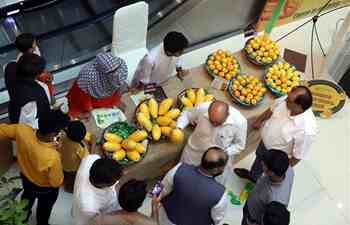CHICAGO, Aug. 4 (Xinhua) -- Chicago Board of Trade (CBOT) agricultural futures closed higher in the past trading week which ended Aug. 3, as deepening drought and trade tensions dramatically impacted wheat and soybean prices.
The most active contract for December corn rose 8 cents weekly, or 2.13 percent, to 3.8425 dollars per bushel. September wheat delivery went up 25.75 cents, or 4.85 percent weekly, to 5.5625 dollars per bushel. November soybeans were up 17 cents, or 1.92 percent, to 9.0225 dollars per bushel.
Soybean futures saw significant ups and downs this week. Hopes that Washington and Beijing could go back to the negotiating table pushed up prices during the first two sessions. However, escalating tensions with more tariffs being announced against each other dragged down the oil seeds. Short-covering on Friday managed to drive up the soybean futures, which ended this week in the positive territory.
CBOT wheat futures soared almost five percent weekly amid declining world supply due to extreme weather conditions. Drought has hit France, Germany, Black Sea area and Australia, all are key wheat exporters.
Talks that Ukraine will cap its wheat export sales once triggered panic in the market, but an official denial gave some relief to traders.
Russian wheat prices have also moved higher over the last few weeks, driving world prices and U.S. futures prices up as well.
CBOT wheat only retreated on Friday as a result of profit-taking. Still, the prices have reached three-year highs, and the bullish trend will probably stay.
Corn futures followed wheat's rally to two-month highs. Like wheat, major exporter stocks will be tight this year. Market observers expect record large demand for U.S. corn export, which will pull corn upwards through harvest.
On Monday, the U.S. Department of Agriculture (USDA) released its weekly crop progress report, showing that corn and soybean good/excellent ratings remained unchanged from a week ago.
Next Friday, the USDA will release its monthly supply and demand report, which will give an updated picture of agricultural commodity markets.

















